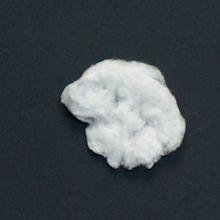Submitted by ivars211 on
C6H7(NO2)3O5 ; C6H8(NO2)2O5 ; C6H9(NO2)O5
Nitrocellulose is used as a binder in pyrotechnic compositions. It is also used in some items without any other oxidizers or fuels. In other fields of pyrotechnics than fireworks it is widely used as a propellant, sometimes mixed with nitroglycerin and other materials (so called double- or triple base propellants).
Nitrocellulose is sold in gun shops to those with the proper licenses in some countries. Nitrocellulose is the main compound in smokeless gunpowder. Double and triple base powders seem to be most common though. A less nitrated but usable form of cellulose, called celluloid, is also used in some household items: ping-pong balls (see Nitrocellulose lacquer). This may be a source for small amounts. Celluloid is also used for film but that is getting a little scarce these days with digital cameras taking over the market. It is probably too expensive for pyro uses anyway. Finally, it is possible to make nitrocellulose at home. The procedure is too lengthy to describe well here, but it involves treating cellulose (preferably cotton or paper) with a mixture of sulfuric acid, nitric acid and water. The product is then washed extensively and stabilized. Properly stabilizing the product at home may be difficult and commercial nitrocellulose is preferred for that reason.
Nitrocellulose is subject to detonation using a detonator and a booster explosive, though a large blasting cap may be plausible. It is also extremely flammable and must be handled as if it is a mixed composition (which it is in fact, on the molecular level, unlike most pure chemicals). Pure nitrocellulose is thermally instable and will decompose over time. Nitrocellulose is also impact sensitive. Double and triple base powders contain nitroglycerin and are probably best avoided for use in fireworks.


